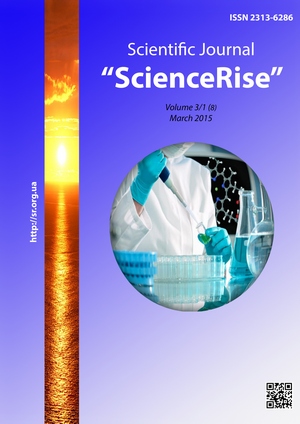The role of sun activity variations in condition changes of subpolar ozonosphere during spring
DOI:
https://doi.org/10.15587/2313-8416.2015.39146Keywords:
total ozone amount, sun activity, ozone hole, correlation, Arctic, AntarcticAbstract
The influence of sun activity variations on interannual distribution changes of total ozone amount over North and South hemispheres subpolar regions in different months was studied. It was established, that in springtime this influence is maximal. Correlation of studied processes in this time of year is significant and positive. The sun activity role in subpolar ozonosphere changes was revealed
References
Aleksandrov, E. L., Izrael, Y. A., Karol, I. L., Hrgian, A. H. (1992). Ozone shield Earth and its changes. SPb. Gidrometeoizdat, 288.
Ivanov-Kholodny, G. S., Tsushin, A. A. (1987). Shortwave solar radiation and its effects on the upper atmosphere and ionosphere. Moscow:VINITI, Space exploration. The results of science and technology. Sat. scientific. tr., 26, 80–154.
Douglass, A. R., Newman, P. A., Solomon, S. (2014). The Antarctic ozone hole: An update. Physics Today, 67 (7), 42–48. doi: 10.1063/pt.3.2449
Kapitsa, P., Gavrilov, A. A. (1999). Confirmation of the hypothesis of a natural origin of the Antarctic ozone hole. DAN USSR, 366 (4), 543–546.
Farman, J. C., Gardiner, B. G., Shanklin, J. D. (1985). Large losses of total ozone in Antarctica reveal seasonal ClOx/NOx interaction. Nature, 315 (6016), 207. doi: 10.1038/315207a0
Manney, G. L. et. al. (2011). Unprecedented Arctic ozone loss in 2011. Nature, 12, 9. doi: 10.1038/nature10556
Bekoryukov, V. I. (2009). Long-term changes in global ozone // Izvestiya RAN, Physics of the atmosphere and ocean, 45 (5), 607–616.
Vitinskii, Y. I., Kopecky, M. A., Kuklin, G. V. (1986). Statistics sunspot. Moscow: Nauka, 201.
Dessler (2000). The Chemistry and Physics of Stratospheric Ozone. N-Y and L, Academic Press, 214.
Dobson. G. M. B. (1968). 40 Years Research on Atmospheric Ozone at Oxford – A History. Applied Optics, 7 (3), 387–405. doi: 10.1364/ao.7.000387
Fesenkov, V. G. (1934) Determining the equivalent thickness of the atmospheric ozone produced in Kupcino. Reports of the USSR Academy of Sciences, 2 (8), 448–449.
Database on Total ozone changes. Available at: http://www.woudc.org
Database on Wolf index changes. Available at: http://www.gao.spb.ru/database/esai
Kobzar (2006). Applied Mathematical Statistics. Moscow: FIZMATLIT, 816.
Skvortsov, V. (2002). Delaunay triangulation and its application. Tomsk. Publishing House of Tomsk State University, 128.
Downloads
Published
Issue
Section
License
Copyright (c) 2015 Alexander Kholoptsev, Мария Павловна Никифорова

This work is licensed under a Creative Commons Attribution 4.0 International License.
Our journal abides by the Creative Commons CC BY copyright rights and permissions for open access journals.
Authors, who are published in this journal, agree to the following conditions:
1. The authors reserve the right to authorship of the work and pass the first publication right of this work to the journal under the terms of a Creative Commons CC BY, which allows others to freely distribute the published research with the obligatory reference to the authors of the original work and the first publication of the work in this journal.
2. The authors have the right to conclude separate supplement agreements that relate to non-exclusive work distribution in the form in which it has been published by the journal (for example, to upload the work to the online storage of the journal or publish it as part of a monograph), provided that the reference to the first publication of the work in this journal is included.

